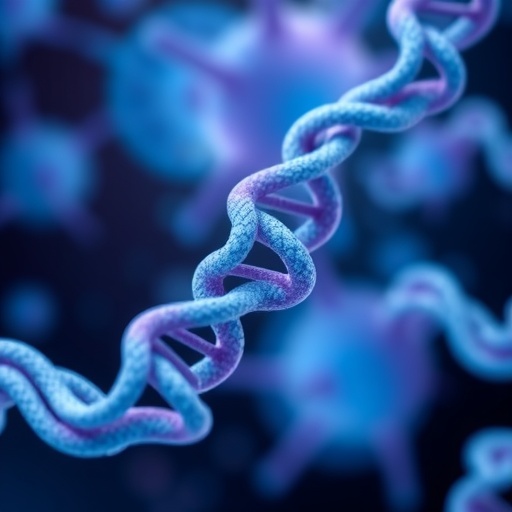Unveiling Cancer’s Evolutionary Playbook: How Tumours Outsmart Chemotherapy
Cancer is an evolutionary battle waged within our own bodies. Unlike the gradual changes in species over millennia, the cells that compose us undergo continuous genetic alterations throughout our lifetimes. While most of these DNA changes are innocuous, a number of mutations—aptly named “driver” mutations—grant rogue cells a proliferative advantage, ultimately igniting the genesis of cancer. However, the story does not end there. The administration of chemotherapy introduces an intense selective pressure, prompting tumours to evolve rapidly and find new genetic routes to survive and thrive despite treatment.
A pioneering team at IRB Barcelona has developed DiffInvex, an innovative computational framework designed to dissect this dynamic evolutionary landscape. By tracking shifting evolutionary pressures on genes as healthy cells morph into malignant tumours and subsequently adapt under chemotherapy assault, DiffInvex offers a powerful lens through which to understand, and ultimately challenge, the genetic strategies tumours exploit to resist drugs.
Harnessing data from over 11,000 human genomes—including both healthy and cancerous tissue samples from around 30 distinct tissue types—DiffInvex maps the mutational paths tumours embark upon as they develop and respond to treatment. This groundbreaking research, recently published in Nature Communications, illuminates the “escape routes” cancers take to overcome chemotherapy, pinpointing key genes whose mutations are selected for during these critical phases.
Chemotherapy, a mainstay of cancer treatment for decades, remains dogged by the problem of tumour relapse. Tumours initially shrink under treatment but frequently bounce back, often in more aggressive forms. Decoding how cancer cells acquire mutations that enable them to endure chemotherapy has been a formidable challenge. This complexity arises because chemotherapy itself introduces additional DNA damage, effectively obscuring the genetic signals researchers strive to detect. Moreover, patients rarely receive single-agent types of chemotherapy; instead, they are treated with complex drug cocktails, further complicating analysis.
Dr. Fran Supek, senior author and group leader at IRB Barcelona as well as a professor at the University of Copenhagen’s Biotech Research & Innovation Centre (BRIC), emphasizes the novelty of the approach: “We needed a method that could cut through the noise and observe evolution in real-time during tumour development and treatment.” DiffInvex meets this need by ingeniously estimating a baseline “neutral” mutation rate in essential coding regions of the genome, using neighboring non-coding regions as comparative controls. This empirical baseline effectively isolates the influences that bias mutation rates and spectra in tumour evolution and therapeutic response.
One of DiffInvex’s transformative insights comes from uncovering that cancer resistance to therapy is often not driven by mutations in specialized, drug-resistance genes. Instead, the accumulation of additional driver mutations in well-known cancer genes amplifies the tumour’s core survival circuitry, rendering it broadly resilient to different chemotherapeutic agents. Among these genes are prominent oncogenes such as PIK3CA, tumor suppressors like SMAD4, and metabolic regulators such as STK11. The selection of mutations in these genes upon exposure to chemotherapy exemplifies the evolutionary flexibility tumours leverage to escape eradication.
Delving deeper, the team compared 1,722 genomes from healthy tissues alongside their matched tumour counterparts, highlighting an intriguing evolutionary nuance. The gene ARID1A, historically classified as a tumour suppressor driver, along with other purported cancer genes, was found to be frequently mutated and positively selected during normal aging. This observation challenges prevailing dogma, suggesting that some mutations long considered as cancer initiators might instead be evolutionary relics: genetic changes that accumulate in tissue over time but don’t necessarily spark malignancy on their own.
This revelation carries profound implications. If certain so-called driver mutations are evolutionary baggage rather than active disease catalysts, this nuance must be integrated into cancer diagnostics and therapeutics. It redefines the distinction between mutations that signal imminent cancer risks and those that are innocuous hallmarks of cellular aging, potentially refining early detection panels and reducing false alarms that cause undue patient anxiety.
Dr. Supek summarizes their findings with a striking metaphor: “Cancer doesn’t craft bespoke shields tailored to each drug. Instead, it fortifies its fundamental machinery so that nearly any assault inflicts less damage.” This conceptual shift underscores the importance of targeting the tumour’s core survival pathways—a strategy with far-reaching potentials in the development of more effective combination therapies.
Recognizing this, the researchers advocate for therapeutic regimens that pair standard chemotherapy with drugs that inhibit these central genes’ signaling pathways. For example, coupling chemotherapy with inhibitors targeting PIK3CA or STK11 pathways could forestall or even prevent the emergence of resistant tumours. Such rational drug combinations represent a promising frontier in precision oncology, where treatments are strategically designed based on tumor evolutionary trajectories.
Crucially, the development of DiffInvex also opens possibilities for dynamically predicting the evolutionary courses tumours may take in individual patients. Dr. Ahmed Khalil, first author and former postdoctoral fellow at IRB Barcelona, now senior data scientist at IMIDomics, enthuses: “By filtering out the mutational ‘noise’, DiffInvex could someday empower clinicians with the foresight to anticipate tumour resistance mechanisms—and intervene proactively to shut them down.”
This foresight aligns perfectly with the broader vision of personalized medicine—tailoring interventions not just based on a static snapshot of the tumour’s genetics, but by understanding its evolving genetic landscape under therapeutic pressure. Effectively, treatments could outpace the cancer’s evolutionary arms race.
The significance of this research is amplified by its scale and rigor, drawing insights from thousands of whole-genome sequences and integrating complex mutational spectra with evolutionary models. Beyond its immediate clinical implications, DiffInvex sets a new methodological standard for studying mutational processes in cancer biology.
As cancer continues to evolve, so too must our scientific strategies. The advent of DiffInvex marks a decisive step towards unraveling cancer’s sophisticated adaptations—transforming how we understand, detect, and ultimately outsmart this complex disease.
Subject of Research: People
Article Title: DiffInvex identifies evolutionary shifts in driver gene repertoires during tumorigenesis and chemotherapy
News Publication Date: 13-May-2025
Web References: 10.1038/s41467-025-59397-8
Keywords: Cancer, Chemotherapy, Cancer treatments, Cancer genetics, Mutation rates
Tags: adaptive evolution in malignanciescancer genetic mutationsCancer Treatment Strategieschemotherapy resistance mechanismsDiffInvex computational frameworkdriver mutations in tumorsevolutionary biology of cancergenomic analysis of cancerhuman genome data in oncologyinnovative cancer research methodsIRB Barcelona researchtumor evolution under treatment





